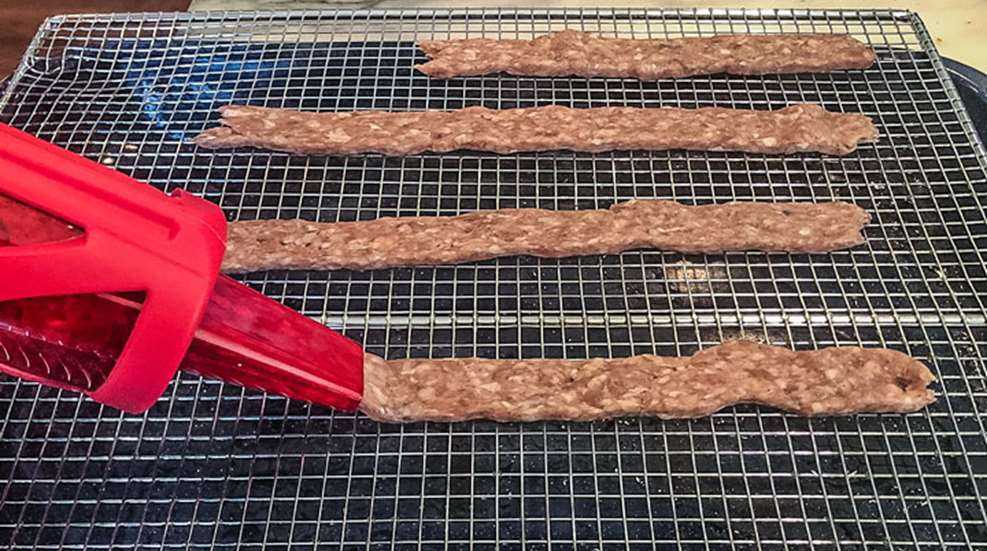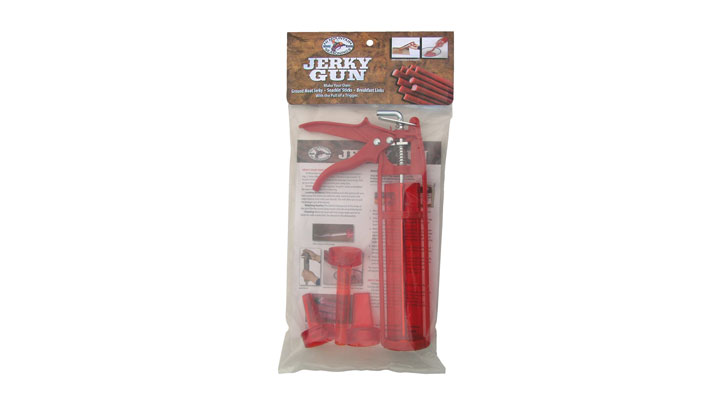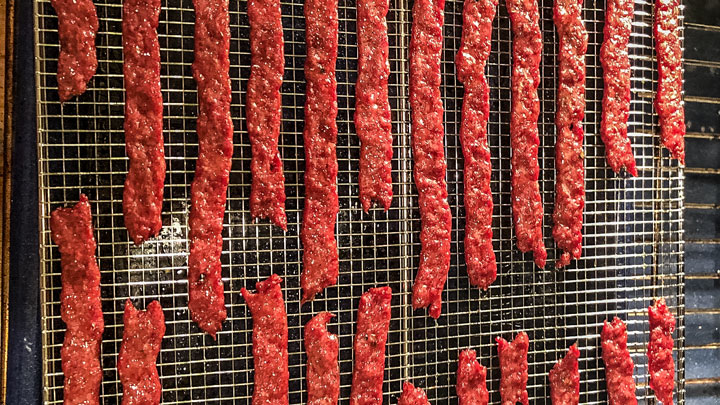
The present crisis surrounding the COVID-19 virus has led to most of the country—if not the world—being stuck at home, apart from trips to the grocery store to buy the food we need to sustain life.
While many of us are working from home, we still have way more time than usual because there’s a shorter commute from the bedroom to the desk than from the garage to the office building or job site. That time savings means extra time to think, which in my case can be dangerous, as you will see.
One of the thoughts that came into my head was: What if there was a way for the whole family to have fun AND help ensure there’s food to last a while?
I harkened back to an education conference some years ago, when I met a man named Lionel Joseph at the Hailie Selassie pavilion, where he was the director of cultural events. He and I shared a delicious snack of beef jerky, given to him by an exchange student from Cameroon who carried plenty of it on his rail travels between Washington and Philadelphia.
Actually, that’s a scene from one of the funniest movies ever made, Trading Places, but I did think about it, and that led me to purchase a beef-jerky kit from Hi Mountain Seasonings.
I’d never made beef jerky before, despite dabbling in the occasional hunt and even more occasional success at such endeavors. The process seemed too device-I-did-not-own, labor and time intensive. While labor and time were always fungible based on motivation, the need for a dehydrator was an insurmountable problem, as my wife is quite positive that I have needlessly cluttered her house with gadgets we never use.
That’s a horrible lie, as we used the bread maker at least once in the place we lived before moving here a decade ago and if I could find the fondue pot, we’d use it potentially every single Leap Day. But I digress.
Thanks to the seasoning and cure pack, along with a screen and a jerky gun, Hi Mountain Seasonings’ website promised that I’d be able to make delicious beef jerky in our oven that even Clarence Beeks wouldn’t say, “No, please,” to.

I accepted that challenge, and took some of the slightly overbought ground beef we snagged on the last foray into the backwoods of the local Safeway. To be precise, I used 1.5 pounds of 80-20 ground beef, which turned out to be both too much and too fatty as far as Hi Mountain’s instructions are concerned, and the company is not wrong about that.
Obviously, you can make as much beef jerky as you have seasoning, but if you’re using the screen Hi Mountain sells—or anything else that will fit in an oven—you have limited surface area for the jerky strips.
Also, the jerky gun handles maybe a quarter-pound of ground beef in its reservoir, so sextupling that amount will require multiple reloads. The gun itself is basically identical to a caulking gun, with a red, translucent plastic tube in place of the caulk reservoir. Don’t try using a caulking gun to make beef jerky, however, or you might caulk yourself shut at one or both ends, which would be very bad, indeed.

The Hi Mountain Seasonings Jerky Maker’s Variety Pack #1 Jerky Kit includes a large packet of the company’s cure mix, along with five seasoning, or flavor, blends: Original, Mesquite, Hickory, Cajun and Cracked Pepper N Garlic. I elected to use the hickory blend for my first attempt at making beef jerky.
The process is amazingly simple. First, you mix the cure and the seasoning (based on the provided chart for ground beef) in the included shaker. Then, you add a quarter-cup of ice water per pound of meat, and mix everything together. The ground beef will start to get sticky, which is a signal you’re doing the right thing.
Mix everything for about 5 minutes, then stick the seasoned and curing meat in the fridge for at least 6 hours. Go back to whatever you were doing to pass the time. I watched Trading Places followed by Coming to America, which elicited much mirth.
That evening, I broke out the jerky gun, loaded the tube, attached the flat nozzle and started popping caps into the target. In this case, the caps were strips of cured, seasoned beef and the target was the screen.
Why use the screen instead of, say, a cookie sheet? The screen allows the hot air in your oven to circulate around all sides of the beef strips, ensuring even cooking and minimal, if any, sticking. I preheated the oven to 180 degrees per the instructions, put the screen atop a drip pan and put both into the top rack of the oven.
I set the timer on my Rochefoucauld—the thinnest water-resistant watch in the world, hand-crafted in Switzerland, water-resistant to three atmospheres and tells time simultaneously in Monte Carlo, Beverly Hills, London, Paris, Rome and Gstaad—for an hour and 20 minutes. Then I watched most of Spies Like Us while I waited.
Here’s where things get interesting, or at least slightly less boring than watching jerky cook. The finished jerky I took from the oven was delicious, moist and, in the words of my 9-year-old son, tasted just like a really good hot dog. But, it required refrigeration (it will last a month in the fridge or 6 months in the freezer).

Most people want jerky to last longer outside of the fridge, as they use jerky to preserve meat in the event of a power loss or a disruption in the food supply. Now, the current crisis has yet to cause major disruptions in the food supply—there’s always been plenty of ground beef at the grocery stores I’ve visited while social distancing—and it is responsible for zero power outages, but that situation could change. While making ground beef last a month is an improvement, many people think that’s not long enough.
Well, there’s good news. If you prefer a drier, and therefore longer-lasting, jerky, you can set the oven to 200 degrees and leave the strips in for a longer period of time—at least enough to enjoy the end of Spies Like Us. While this won’t let the jerky keep forever, it will last longer in the fridge and can be unrefrigerated for a few days, too. Just make sure it’s very dry to protect against spoilage.
Ultimately, making really awesome beef jerky probably requires a dehydrator, a smoker, wood chips, time, dedication and patience. But you can make pretty darn good beef jerky with the meat you buy at the grocery store and a standard oven in a short period of time without a ton of effort. I will be trying out the other seasonings from the Hi Mountain kit, and if they are as good as the hickory blend, my wife won’t have to worry about another gadget.
My next project will involve pork bellies, which are used to make bacon, which you might find on a bacon, lettuce and tomato sandwich…





































